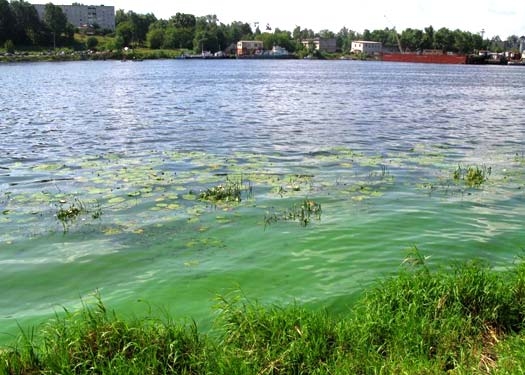
Scientists of "Fisheries Research and Production Center" LLP told about the process algal bloom, for what reasons this process takes place and how to fight it.
"Fisheries Research and Production Center" LLP, is subsidiary organization of the National Agrarian Science and Educational Center, it constantly monitors the state of ecosystems of water bodies of Kazakhstan and their biological resources, develops the biological bases for the rational use and reproduction of fish stocks, gives annual forecasts of fish catch volumes, proposals on the rules and regulations of fisheries.
One of the processes studied by scientists, which negatively affects the ecological state of water bodies and water quality, is the algal bloom. Algal bloom is the result of the presence of excess nutrients in the water, especially nitrogen and phosphorus, which contributes to the mass development of algae, forming a film on the water, due to which there is a decrease in oxygen concentration. If this process is not prevented, it can adversely affect fish and invertebrate animals.
Algal bloom is the development of phytoplankton causing a change in water color. This process is caused by intensive algal reproduction. It can occur in both fresh and seawater, but is mostly observed in fresh standing waters (ponds, pools, reservoirs, lakes).
Typically, only one or more phytoplankton species are involved in algal bloom. The water turns green, but can also be yellow-brown or red depending on the algae division. Color in water is imparted due to the high concentration of pigmented cells. It is the green color of the water that indicates the development of blue algae. The water blooms involve genera: Anabaena, Aphanizomenon, Microcystis, Nodularia, Oscillatortia.
There are several cleaning methods:
1. Manual cleaning (remove excess vegetation (including cultural plants) from the coast) and polish the weeds. Clean the surface of the water basin from leaves, branches and organic garbage that fell into it. Fan rakes remove the duckweed.
2. Installation of the filter. This device not only cleans water of harmful impurities, but also helps to feed it with oxygen. Filters are divided into 2 groups:
• Flowing (used in large reservoirs);
• Pressure head (suitable for small reservoirs).
3. Full or partial discharge of water from a reservoir.
4. Planting of special plants:
• Coastal plants (iris, air, rogosis) prevent weeds from growing;
• Aquatic plants (water lily, lily) consume nutrients directly from water, cane suppresses the development of blue-green algae;
• Underwater plants (pinnacle, elodea) prevent the development of undesirable algae.
5. Settlement in a body of water of certain species of fish, for example, silver carp, as it feeds on phytoplankton. White amura will help to maintain the purity of the water naturally.

